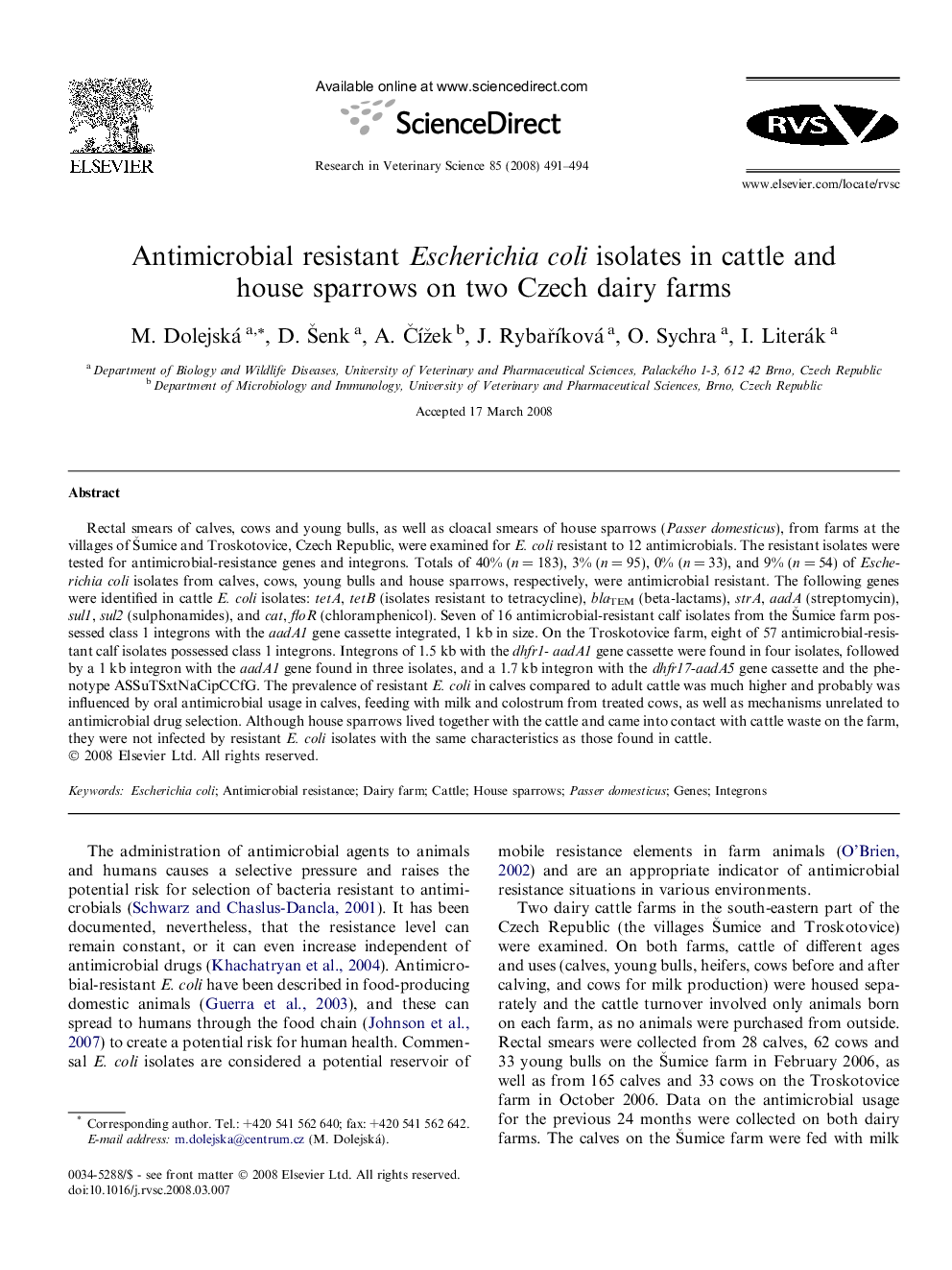| Article ID | Journal | Published Year | Pages | File Type |
|---|---|---|---|---|
| 2456216 | Research in Veterinary Science | 2008 | 4 Pages |
Rectal smears of calves, cows and young bulls, as well as cloacal smears of house sparrows (Passer domesticus), from farms at the villages of Šumice and Troskotovice, Czech Republic, were examined for E. coli resistant to 12 antimicrobials. The resistant isolates were tested for antimicrobial-resistance genes and integrons. Totals of 40% (n = 183), 3% (n = 95), 0% (n = 33), and 9% (n = 54) of Escherichia coli isolates from calves, cows, young bulls and house sparrows, respectively, were antimicrobial resistant. The following genes were identified in cattle E. coli isolates: tetA, tetB (isolates resistant to tetracycline), blaTEM (beta-lactams), strA, aadA (streptomycin), sul1, sul2 (sulphonamides), and cat, floR (chloramphenicol). Seven of 16 antimicrobial-resistant calf isolates from the Šumice farm possessed class 1 integrons with the aadA1 gene cassette integrated, 1 kb in size. On the Troskotovice farm, eight of 57 antimicrobial-resistant calf isolates possessed class 1 integrons. Integrons of 1.5 kb with the dhfr1- aadA1 gene cassette were found in four isolates, followed by a 1 kb integron with the aadA1 gene found in three isolates, and a 1.7 kb integron with the dhfr17-aadA5 gene cassette and the phenotype ASSuTSxtNaCipCCfG. The prevalence of resistant E. coli in calves compared to adult cattle was much higher and probably was influenced by oral antimicrobial usage in calves, feeding with milk and colostrum from treated cows, as well as mechanisms unrelated to antimicrobial drug selection. Although house sparrows lived together with the cattle and came into contact with cattle waste on the farm, they were not infected by resistant E. coli isolates with the same characteristics as those found in cattle.
